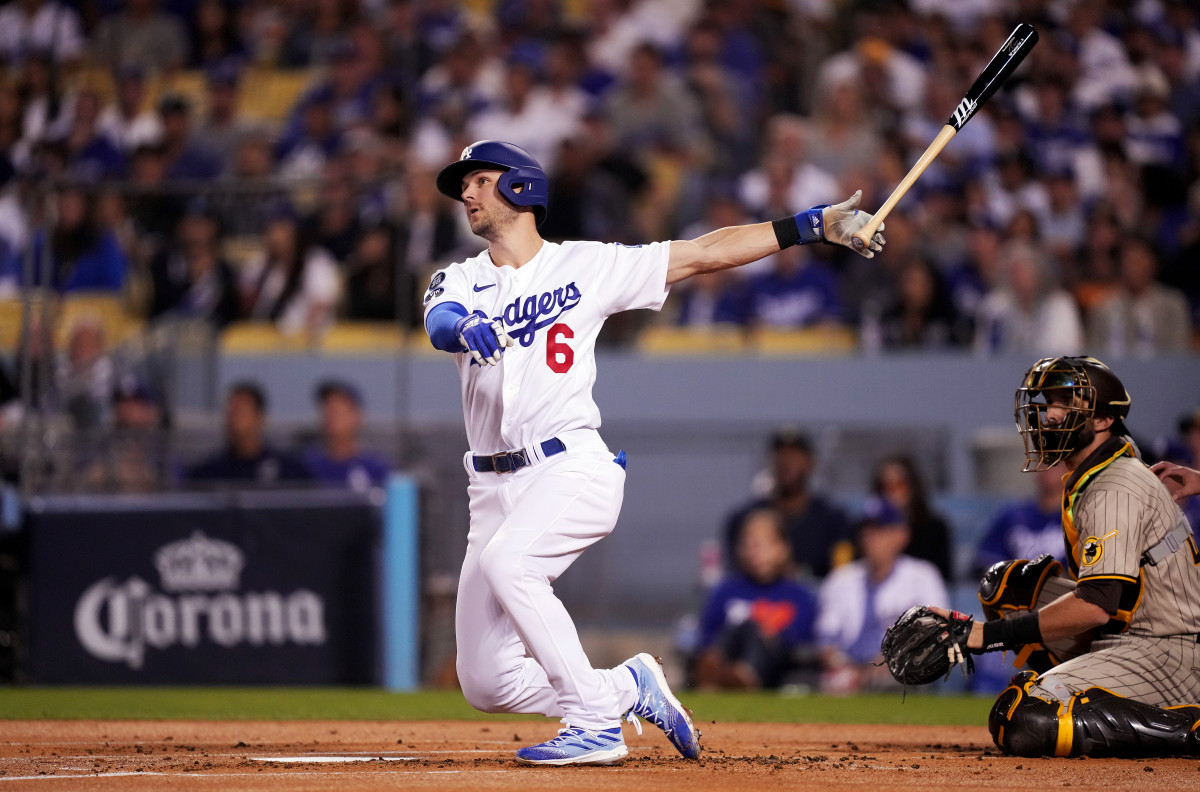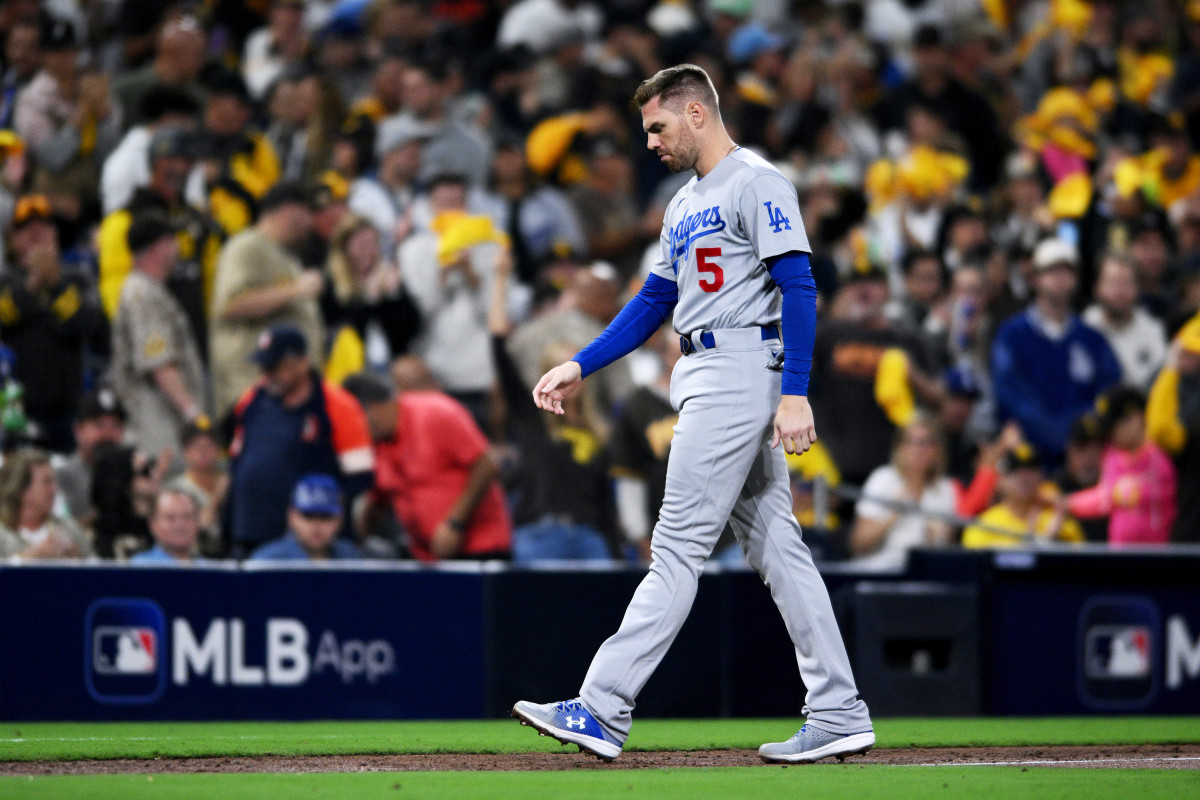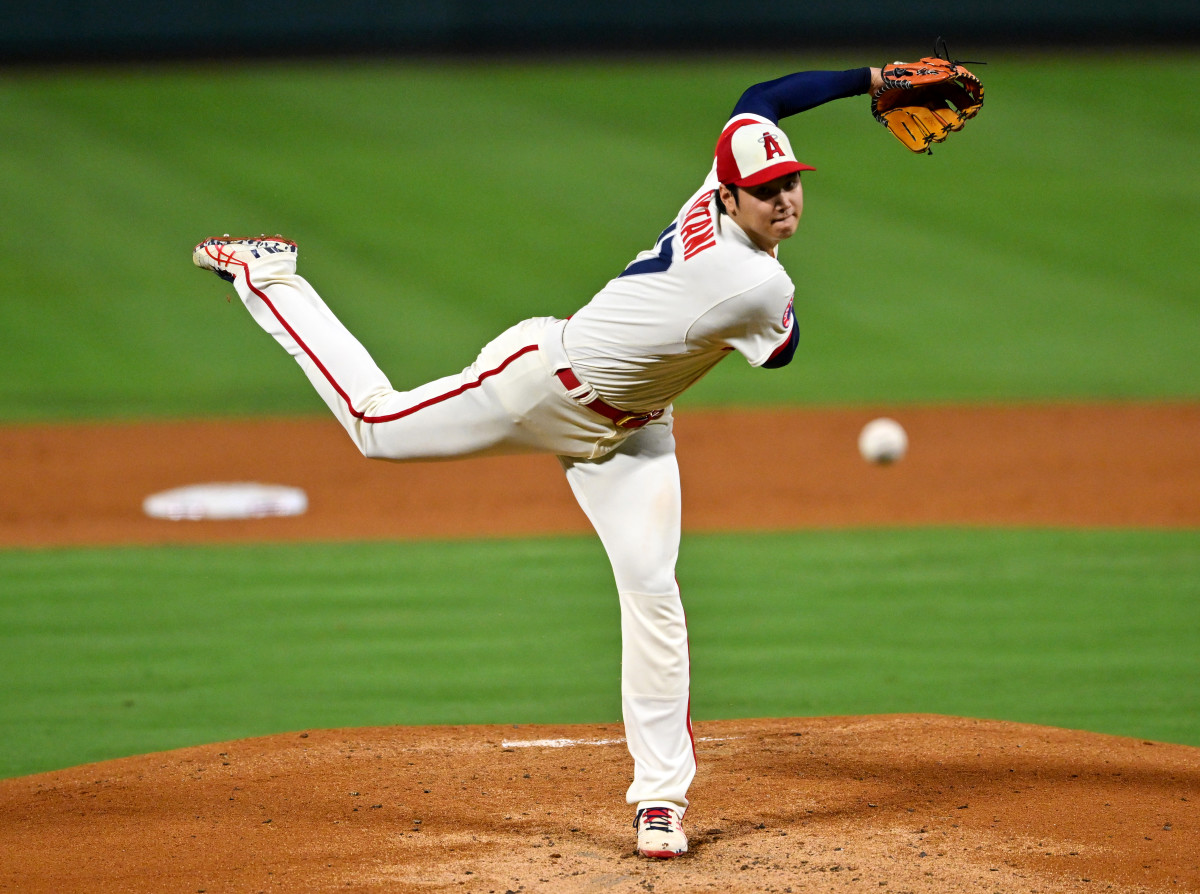Inside the Dodgers’ Puzzling Offseason of Bargain Shopping

When the game of musical shortstop chairs stopped, not only did the Dodgers not have a seat, but they also weren’t even in the room. The team that spent the most money over the past decade essentially opted out one of the hottest free agent markets ever seen, especially for shortstops, where the top of the market soared 59% from last year.
The star-studded Dodgers had Corey Seager and Trea Turner at shortstop the past two seasons. They let each depart as free agents. In the past two years, eight elite free-agent shortstops have changed teams: Seager, Turner, Carlos Correa (twice), Marcus Semien, Trevor Story, Javier Báez, Xander Bogaerts and Dansby Swanson. Los Angeles was a non-factor in all of them.
The five elite shortstops last year pulled down contracts that paid them an average of $177.06 million. This year the average ballooned to $276.75 million for the big four—even without Dodgers money being a factor.
That Gavin Lux is their shortstop today, and not one of those eight elite free agents, signals the unique, narrow space the Dodgers are choosing to occupy. Lux was a shortstop in the minors, but he has never played more than 92 games in a season at that position—and that was back in 2018, when he was 20 years old. There is some doubt as to whether he has the tools, especially the arm strength, to play everyday shortstop for a championship team. Last season his arm strength ranked 21st out of 26 second basemen who made at least 300 throws at the position.
The Dodgers, however, know Lux better than any team, and they are convinced he can be a standout shortstop. They can point to Swanson, who led the Braves to the 2021 World Series title while ranking last in shortstop arm strength, or Jeremy Peña, who had never played in the big leagues before his standout rookie season for the champion Astros.
What is happening with the Dodgers this winter is more complex than trusting Lux. They have allowed nine players to leave for contracts worth $462.5 million while signing six free agents for a fraction of that cost, $45.4 million—with no multiyear commitments. Here are the major reasons why Los Angeles has dialed back its spending:
1. The 2022 NLDS

The Dodgers spent $296.6 million in payrolls and taxes last season for a 111-win superteam, only to get bounced in four games in the Division Series by a Padres team with 22 fewer wins. Meanwhile, a Phillies team that posted 24 fewer victories took home the NL pennant.
According one team source, the crushing exit created some internal soul-searching about the cost of “trying to build a superteam year after year after year.” Feeding the monster with big contracts and trades for the likes of Mookie Betts, Turner, Max Scherzer, Trevor Bauer, A.J. Pollock, Chris Taylor, Kenley Jansen and Freddie Freeman had the added cost of potentially blocking paths of homegrown players.
The postseason exit exposed not only the randomness inherit in the small sample of a postseason series, but also two key flaws with the Dodgers.
One, they simply don’t get enough bulk from their starting pitchers, especially with Walker Buehler out—but that in some part is by analytical design. Their starters threw just 16 ⅓ innings in four games against San Diego. Over the past two postseasons, Dodgers starters are 2–5 in 16 games while taking the ball through six innings only twice. Los Angeles has played 32 straight postseason games without letting a starter go through a lineup three full times.
Two, their offense was broken. The Padres chewed up the Dodgers’ lineup with power pitching. The Dodgers saw 50% fastballs, up from 48.6% in the regular season, with an average velocity of 95.6 mph, up from 93.8 mph. They hit just .206 against those heaters from San Diego. The bats of Trayce Thompson, Justin Turner, Cody Bellinger, Max Muncy, Chris Taylor and Lux looked particularly slow; they hit .133 against fastballs. The Dodgers need better bats against velocity.
2. Bauer
Bauer is appealing his 322-game suspension from MLB for violating the sport’s domestic violence policy. Until a decision is reached, perhaps in the next month or two, the Dodgers do not know whether they must repay some, none or all of Bauer’s lost salary, which could impact their recalculated luxury taxes. It could also impact their 2023 payroll because of ...
3. Resetting luxury-tax rates
Dipping below the first threshold of luxury tax in 2023 ($233 million) would reset the Dodgers’ initial tax rate from 50% to 20% in ’24 (when the first threshold is $237 million).
The Dodgers and Yankees have worked this one-year tax limbo before. The Dodgers barely did so in 2018 (and barely again in ’19). The Yankees did it in ’18 and ’21, each time finishing in second place, eight games out of first, and not advancing past the ALDS.
The Dodgers could stay below $233 million in 2023, then blow out the payroll as a first-time offender in ’24. How high could they go? Steve Cohen high. In ’15 the Dodgers carried a payroll of $298 million. That’s $374.3 million in today’s dollars.
Why would 2024 be a good time to blow it out?
4. Shohei Ohtani

The Dodgers have wanted Ohtani since he was in high school. An opportunity may be coming—either in July through a trade if the Angels are out of the race and have a new owner in place—or, more likely than that scenario, through free agency after the season.
Cohen has proved you never can rule out the Mets when it comes to salary room. The Yankees have $128.8 million committed against the luxury tax each year through 2027 for Aaron Judge, Gerrit Cole, Giancarlo Stanton and Carlos Rodón as they age through their 30s. Ohtani will reach free agency in time for his age 29 season—two years younger than Judge—and as a two-way impact player and major drawing card likely will be the game’s first $50 million a year player.
The Dodgers have a huge opening at the right time. It doesn’t guarantee they get him, and no team plans so narrowly on one player, but they are affording themselves the best chance.
5. The next wave of Dodgers’ homegrown stars
From 2015 to ’17, the Dodgers promoted to the big leagues Seager, Julio Urías, Ross Stripling, Buehler and Bellinger. Los Angeles believes similarly in its core of ready and near-ready talent, including Lux, infielders Miguel Vargas and Michael Busch, outfielders James Outman and Andy Pages, catcher Diego Cartaya and pitchers Bobby Miller, Ryan Pepiot and Gavin Stone. The upsides are particularly high with Vargas and Pages, who have terrific hit tools, and Miller, who could be a rotation fixture.
Even if they are right about this group, it’s difficult to win a championship while establishing more than one or two young players. With the roster they have today, the Dodgers are not better than the Padres with an infield of Vargas at third, Lux at short and Muncy at second—too many defensive questions, especially without shifts—and some combination of Thompson, Taylor, Outman and Jason Heyward in center field.
6. Reclamations
Starting pitchers Tony Gonsolin—a two-way player at St. Mary’s—and journeymen Tyler Anderson and Andrew Heaney combined to go 35–20 in 2022. The Dodgers’ best reliever was Evan Phillips, who a year earlier was released by the Orioles and claimed off waivers from the Rays. The lineup included Taylor, Muncy, Thompson and Justin Turner, all of whom were given up on by other clubs.
The Dodgers are terrific at identifying underachieving players and bringing out the best in them. That thinking defines their entire offseason shopping list: DH J.D. Martinez (at the urging of Betts and hitting coach Robert Van Scoyoc), infielder Yonny Hernández, outfielders Bradley Zimmer and Heyward, and pitchers Noah Syndergaard, Shelby Miller and J.P. Feyereisen. All of them are projects.
Keep in mind, the Dodgers could not fix Bellinger, one of their own; Joey Gallo didn’t work out, and Muncy and Taylor need fixing after they struggled against velocity last season (.143 and .222 against fastballs 94 mph and above, respectively).
Hernández has the defensive flexibility the Dodgers love and is the kind of bench player that gains value in the new world of no shifts and more stolen bases. The Dodgers acquired him from Oakland after the A’s needed roster room for middling veterans Jace Peterson and Aledmys Díaz.
7. The Philadelphia story
Don’t take this to mean the Dodgers are happy to build an 87-win team. But the Phillies proved in the first year of expanded playoffs that a six seed is not fool’s gold.
(Note to Dodgers: Phillies starters took the ball through six innings six times in the postseason and won five times.)
A greater sample size of this format is likely to show such a run is an exception, but we did just watch for the first time two teams that didn’t win 90 games play in an LCS. And we did just watch elite teams bow out in a flash. Of the six teams that won the most regular season games, the Astros went 11–2 in postseason games and the other five (Dodgers, Braves, Mets, Yankees and Cardinals) went 6–16.
The Dodgers should be concerned about the depth of competition in the packed NL. It’s not just the Padres. The Braves, Mets, Phillies and Cardinals are also loaded. All four elite free agent shortstops wound up on NL competitors: Correa to the Giants, Turner to the Phillies, Bogaerts to the Padres and Swanson to the Cubs. Of the 14 biggest free agent signings this winter, 10 of them were by NL teams—none of them by the Dodgers.
Los Angeles isn’t done yet with its roster. Once they get clarity on the Bauer appeal, the Dodgers might add another bat and/or a reliever. They could trade for a center fielder, such as Michael A. Taylor or Victor Robles, but could more use a left-handed hitter, such as Michael Conforto or the switch-hitter Jurickson Profar. They also could finish off this roster at the trade deadline more than in January.
The Dodgers have won the most games in baseball over the past six years while leading the league in ERA each season and finishing first or second in defensive efficiency for the past four seasons. Translation: They know what they’re doing. It is a smart organization that has earned the benefit of the doubt. But based on how the Dodgers have operated this winter, with the biggest names now off the board, they will try to win with a very different approach in 2023. They are not building a superteam. It will be a tougher test of just how smart they really are as the rest of the league closes the gap on them.
